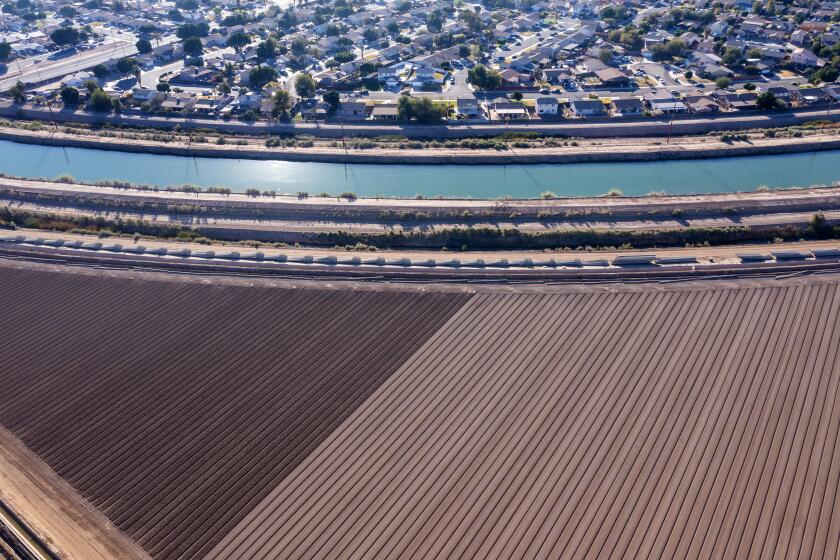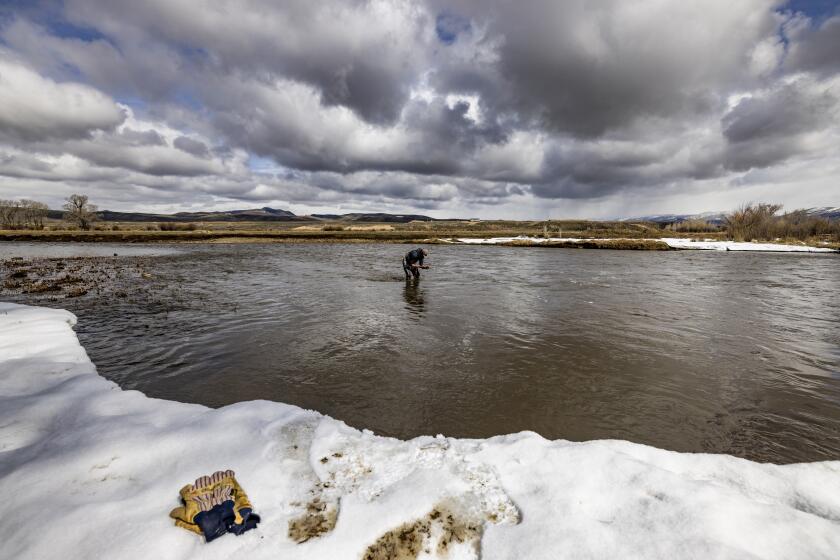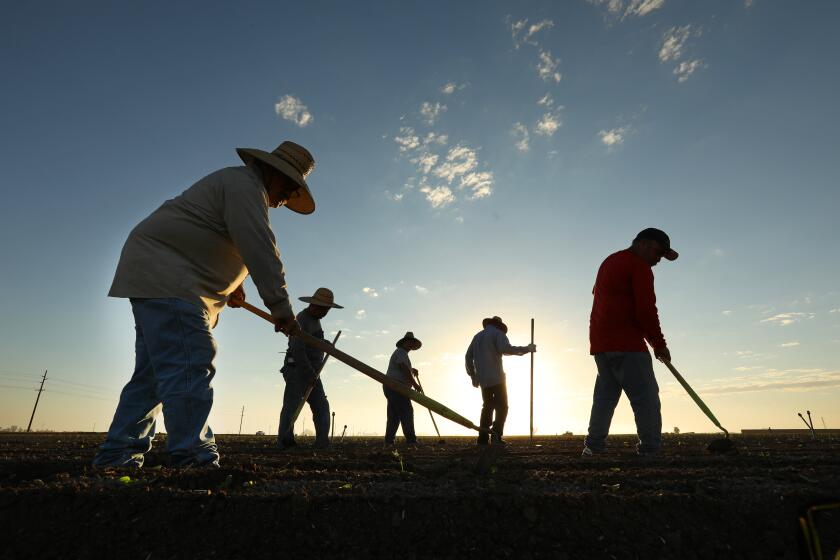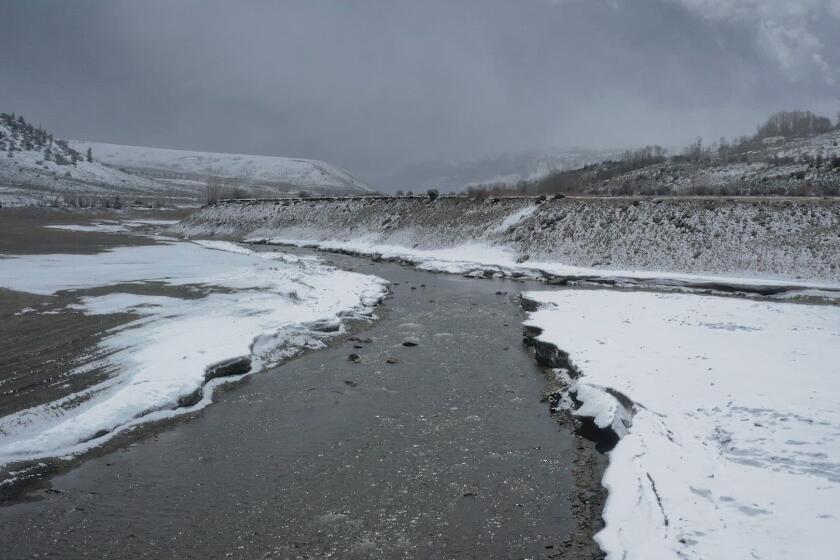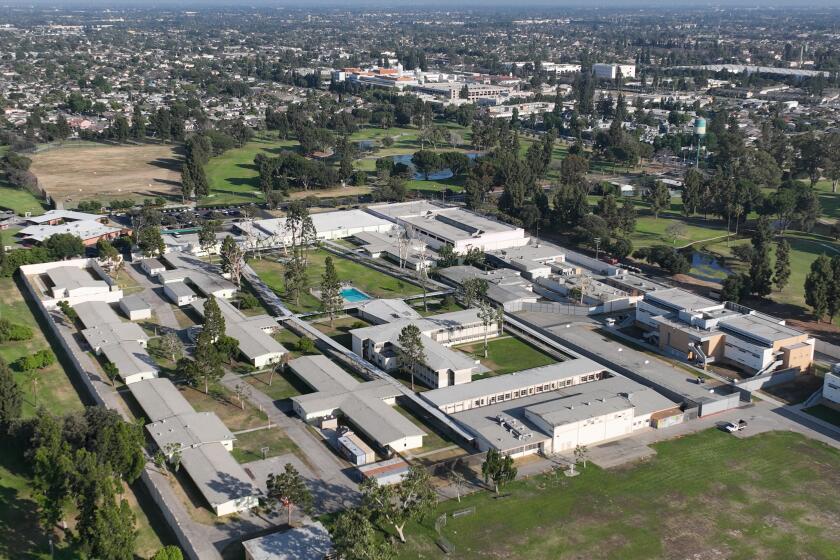At the heart of Colorado River crisis, the mighty ‘Law of the River’ holds sway
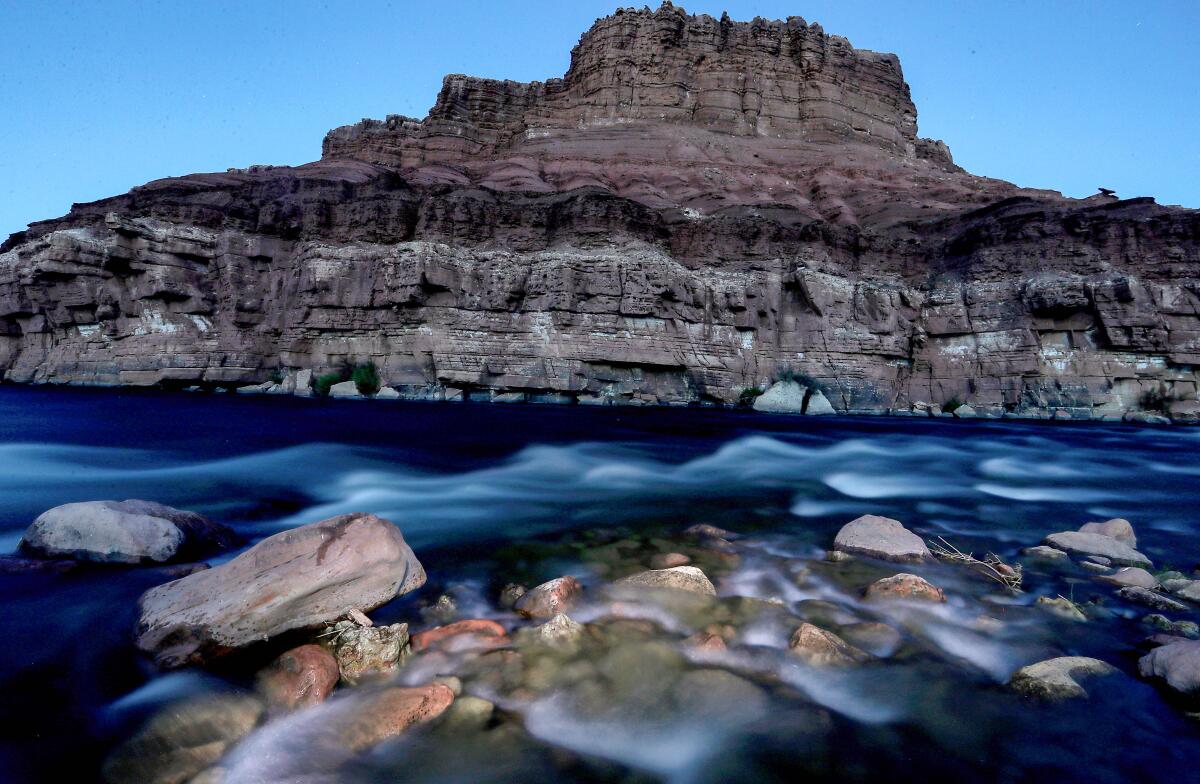
- Share via
It’s a crisis nearly 100 years in the making: Seven states — all reliant on a single mighty river as a vital source of water — failed to reach an agreement this week on how best to reduce their use of supplies from the rapidly shrinking Colorado River.
At the heart of the feud is the “Law of the River,” a body of agreements, court decisions, contracts and decrees that govern the river’s use and date back to 1922, when the Colorado River Compact first divided river flows among the states.
But as California argues most strongly for strict adherence to this system of water apportionment, the other states say it makes little sense when the river’s largest reservoir, Lake Mead, continues to decline toward “dead pool” level, which would effectively cut off the Southwest from its water lifeline. The Law of the River, they say, is getting in the way of a solution.
“We can argue about whether interpretations of the Law of the River match the physical reality,” said Tom Buschatzke, director of the Arizona Department of Water Resources. “But if you end up in a courtroom arguing these points and something isn’t done, the Colorado River system is going to crash.”
As the region wrangles over Colorado River water cuts, California hopes its senior water rights will trump the united front shown by six other states.
As drought, climate change and chronic overuse sap the Colorado River, the federal government has called on the states to collectively reduce their use by 2 million to 4 million acre-feet.
California’s water districts have legal rights to the largest share of the river, which not only provides drinking water for millions of Southern Californians, but also helps feed the nation through agricultural irrigation. The other states — Arizona, Colorado, Nevada, New Mexico, Utah and Wyoming — say it’s unreasonable to let large population centers that are lower in the pecking order such as Phoenix and Tucson go thirsty.
California’s legal position is based on several factors, said James Salzman, a professor of environmental law at UCLA and UC Santa Barbara. First, the authors of the original Colorado Compact made the “fateful decision” to divvy up water for the river’s lower-basin states of California, Arizona and Nevada in absolute quantities instead of percentages.
That means upper-basin states are obligated to deliver 7.5 million acre-feet per year to the lower states, no matter what, which “turned out to be a tragically bad design,” Salzman said.
Additionally, the massive Imperial Irrigation District in California established senior rights to the water before the Colorado River Compact — meaning it holds high-priority rights to deliver the single largest share of the river’s water to Imperial Valley farmlands.
Arizona, by contrast, agreed to junior rights to the river in 1968 in exchange for building the Central Arizona Project, the system that transports river water through the state.
In other words, according to the Law of the River, if there’s not enough water to go around, states like Arizona are supposed to be cut off before California.
That’s led to two very different proposals from the states this week.
California’s proposal includes a previous commitment from Southern California water agencies to reduce water use by 400,000 acre-feet per year through 2026, a reduction of about 9%. The proposal also calls for additional cuts in Arizona, California and Nevada on a tiered scale if Lake Mead continues to decline.
The proposal submitted by the six states outlines reductions from Arizona, California and Nevada beyond what those states have already agreed to. It translates into especially large reductions for California.
The Colorado River is approaching a breaking point, its over-tapped reservoirs dropping. Years of drying have taken a toll at the river’s source in the Rockies.
Rhett Larson, a water law professor at Arizona State University, said California comes out as the “clear winner” if the Law of the River is interpreted as it’s presently written.
“I’m an Arizonan, and so I’m pretty biased in favor of Arizona,” he said. “But I’m also a lawyer, which means I’m pretty biased in favor of the law. And the law says that California’s proposal is basically right — legally. It may not be right practically or morally, but it’s right legally.”
Among the body of the law is 2019’s Drought Contingency Plan, under which California, Arizona and Nevada agreed to a schedule of reductions at Lake Mead through 2026.
Mexico committed under a separate accord to participate in reductions, and some Native tribes have also agreed to conserve water in an effort to boost reservoir levels.
But over the past few years, those reductions haven’t been nearly enough and the reservoir levels have continued to drop.
The 2019 agreement spells out cuts down to a certain point. If Lake Mead’s level reaches an elevation of 1,025 feet — 22 feet below its current level — and continues declining, the existing rules about what should happen fall to the Law of the River, Larson said.
But he also noted that the Central Arizona Project delivers about 40% of water supplies to cities in central Arizona. He said it would be “devastating” for the Arizona project to take most of the cuts before California was required to take substantial cuts.
The six states’ proposal, while not sufficient by itself, is “a better start and solves more problems, and avoids more problems, than California’s proposal,” he said.
For its part, California’s Colorado River Board said its plan “makes a constructive effort to uphold the Law of the River while making substantial efforts to protect the Colorado River system with voluntary reductions far beyond California’s legal obligations.”
“The 40 million people, nearly 6,000,000 acres of agriculture, and 30 Indian tribes that rely on the Colorado River require us to be successful in this effort,” the board wrote in its proposal.
As the federal government pushes states to reduce usage of dwindling Colorado River water, Imperial Valley farmers fear a “worst-case” scenario.
Adel Hagekhalil, general manager of the Metropolitan Water District of Southern California, said all of the states are in agreement that reductions are needed, but that “the priority system is part of the law.”
He noted that California has worked with the other states to adapt and adjust to changing conditions, including putting water back into Lake Mead. Southern California has also made broad efforts in water conservation, instituted severe water use restrictions and made investments in alternative supplies.
“But we can’t bypass a history of agreements that supported the livelihood of people living in California, the business and the economy, and has been acknowledged in courts and in history, and say, ‘Let’s forget about that,’” Hagekhalil said.
Among those court cases was Arizona vs. California, a 1963 Supreme Court case that ruled that of the first 7.5 million-acre feet of the river’s waters, 4.4 million acre-feet goes to California, 2.8 million to Arizona and 300,000 to Nevada.
“It is a long, complicated issue, but really it’s about water rights,” Hagekhalil said, adding that “we all understand that we need to reduce.”
“Let’s assess the impact of these cuts on the environment, and let’s take the time to negotiate who takes the cuts,” he said.
Colorado River in Crisis is a series of stories, videos and podcasts in which Los Angeles Times journalists travel throughout the river’s watershed, from the headwaters in the Rocky Mountains to the river’s dry delta in Mexico.
Still, some officials, including Buschatzke, criticized California’s proposal as being “extremely Law-of-the-River-centric.”
“I understand potential legal arguments. But the six-state proposal recognizes the physical reality of what’s actually happening. … And California’s doesn’t,” he said.
Salzman, of UCLA, said the likely outcome of the impasse is federal intervention followed by litigation.
He couldn’t think of a similar case that might serve as precedent for the current stalemate, but feared the states will run out of time as the river gets drier and lower.
“They’re basically stepping outside the Law of the River, because the Law of the River does not clearly provide for how to reduce 2 million acre feet,” Salzman said. “On the other hand, the Law of the River is why we’re in this mess in the first place.”
More to Read
Sign up for Essential California
The most important California stories and recommendations in your inbox every morning.
You may occasionally receive promotional content from the Los Angeles Times.
